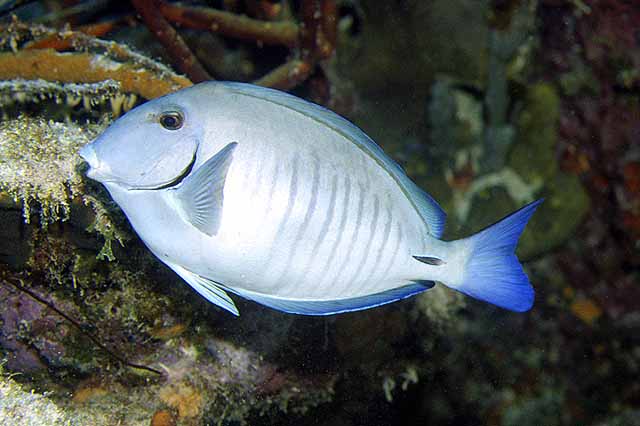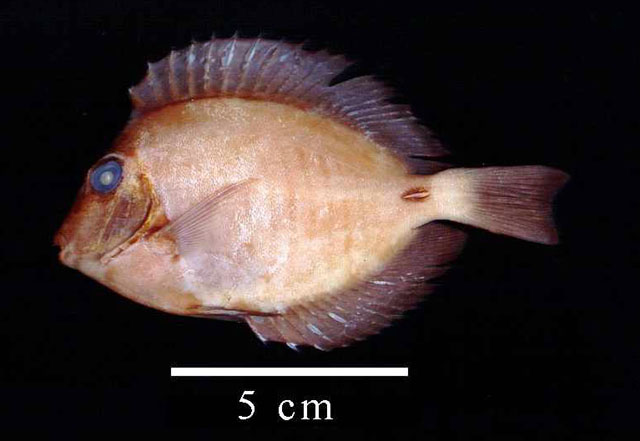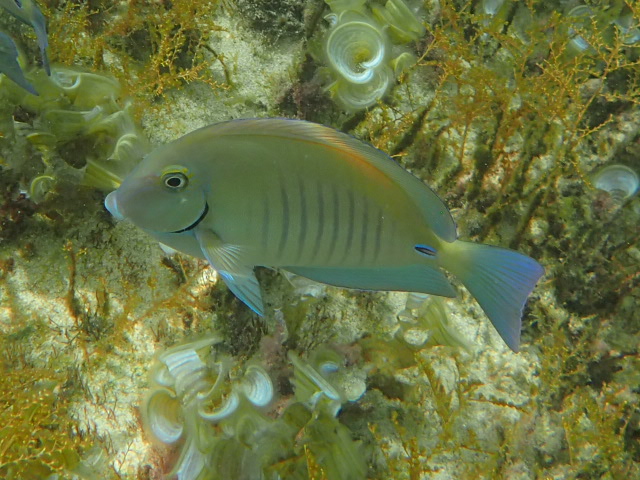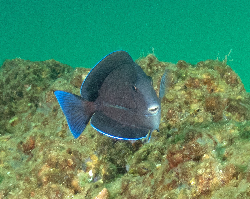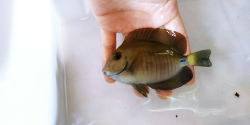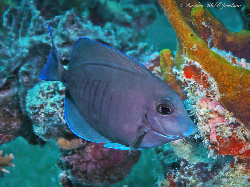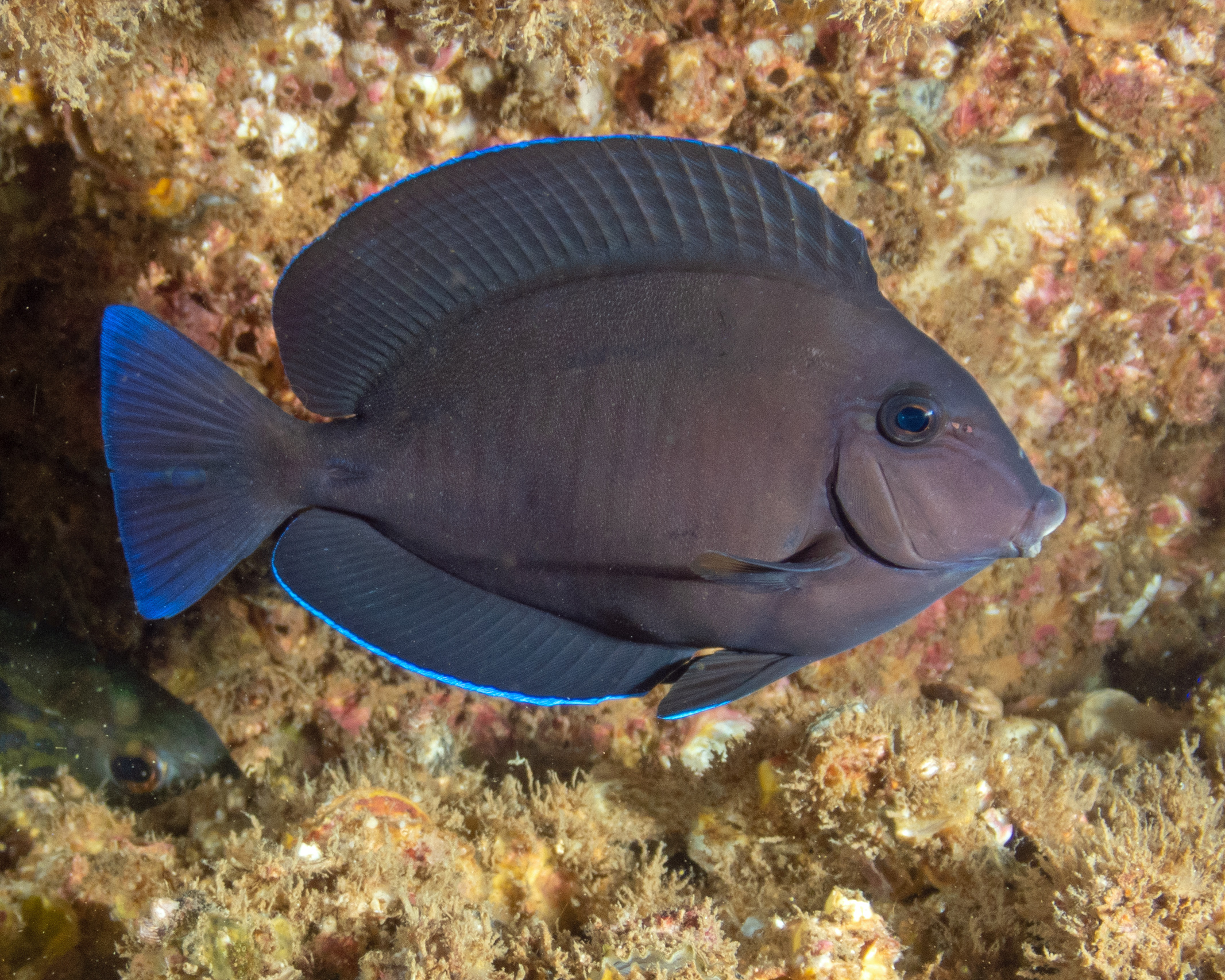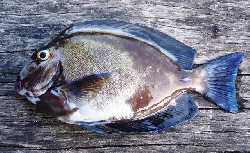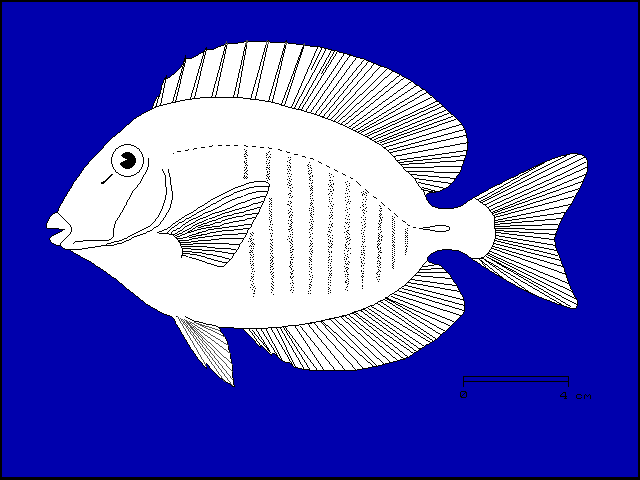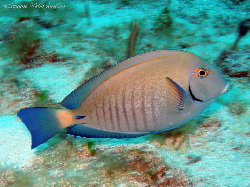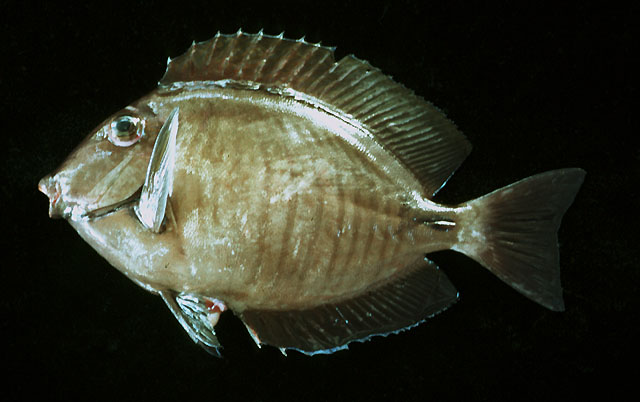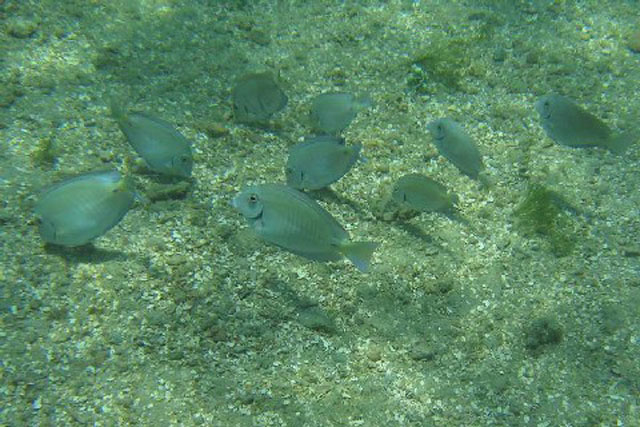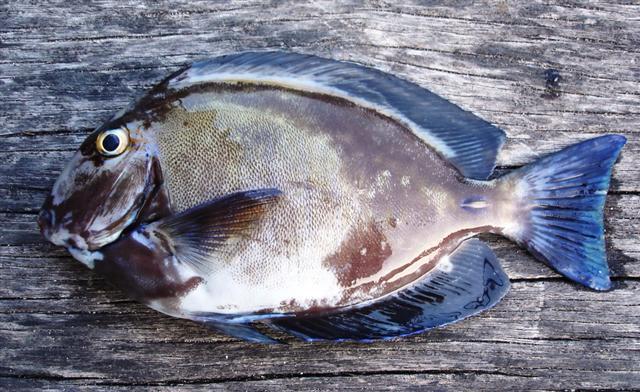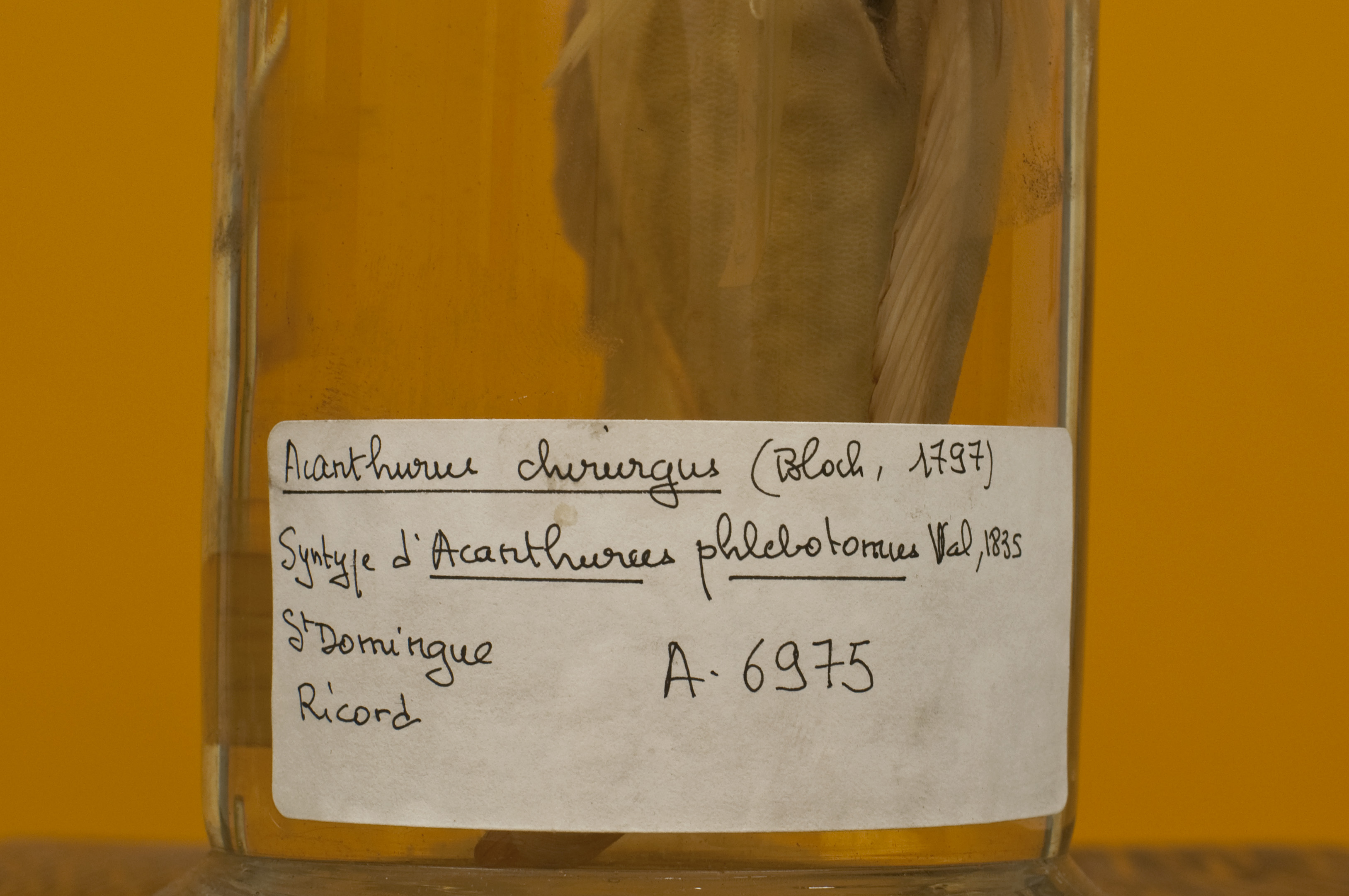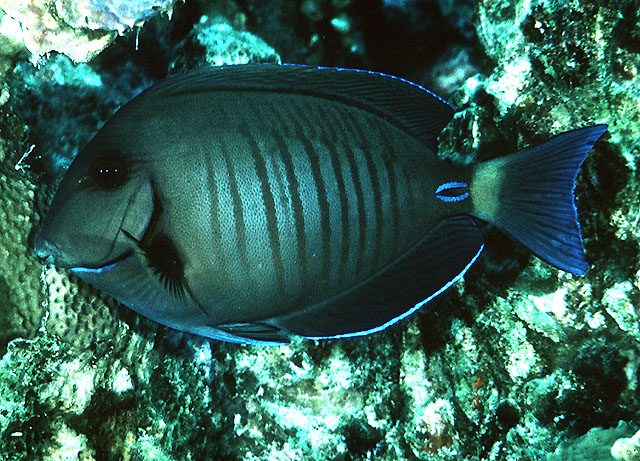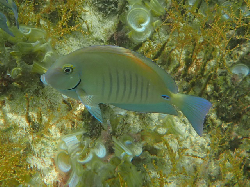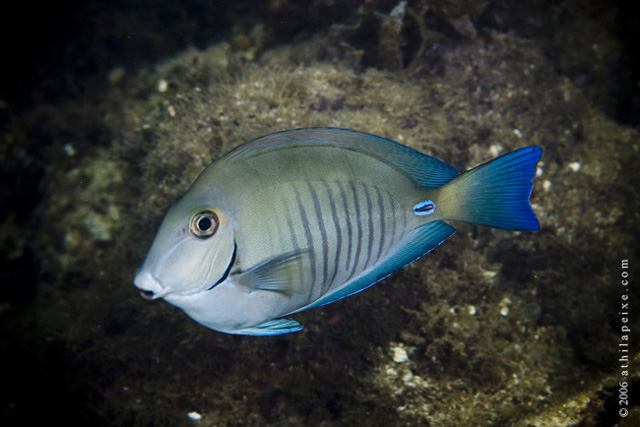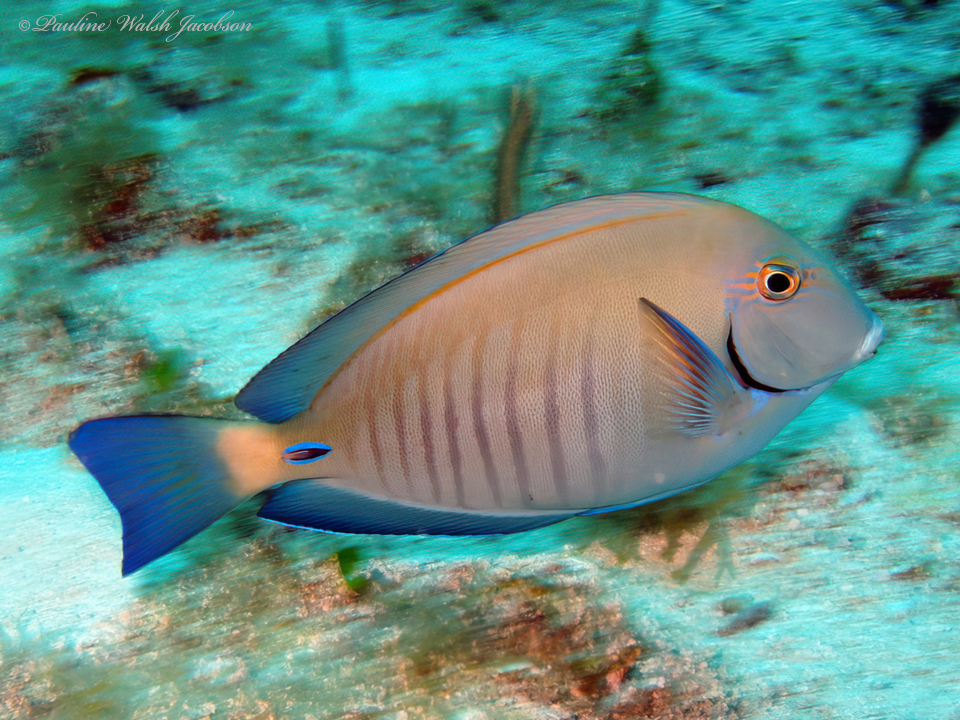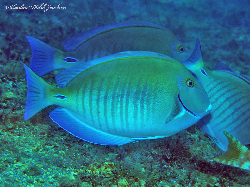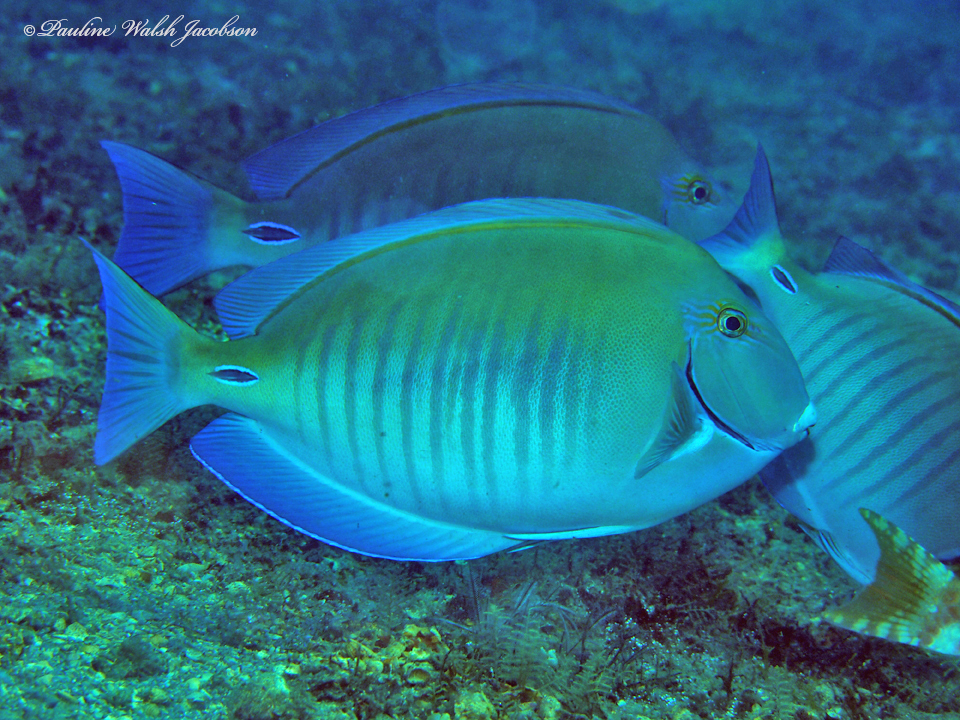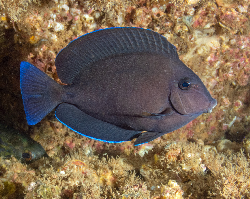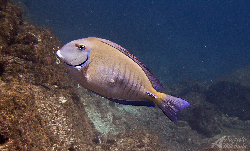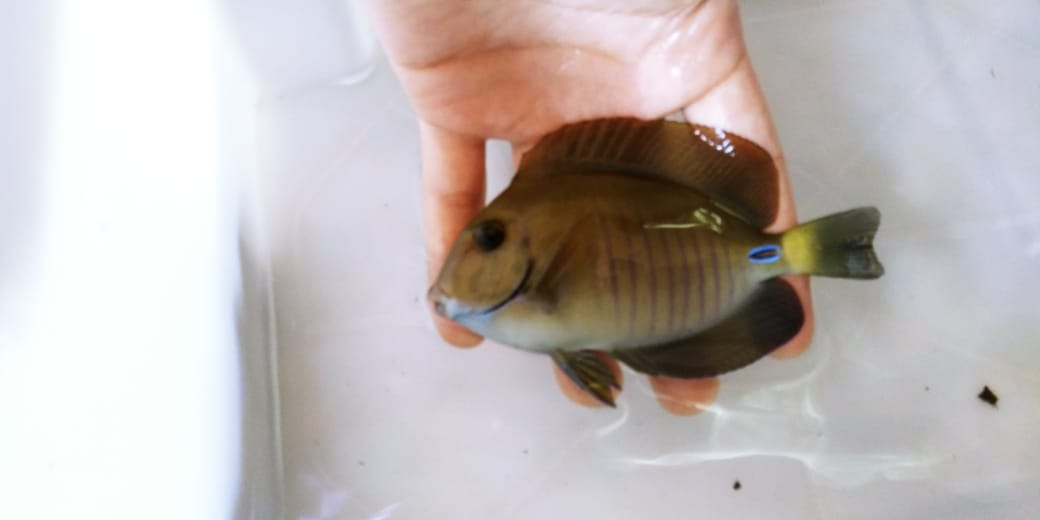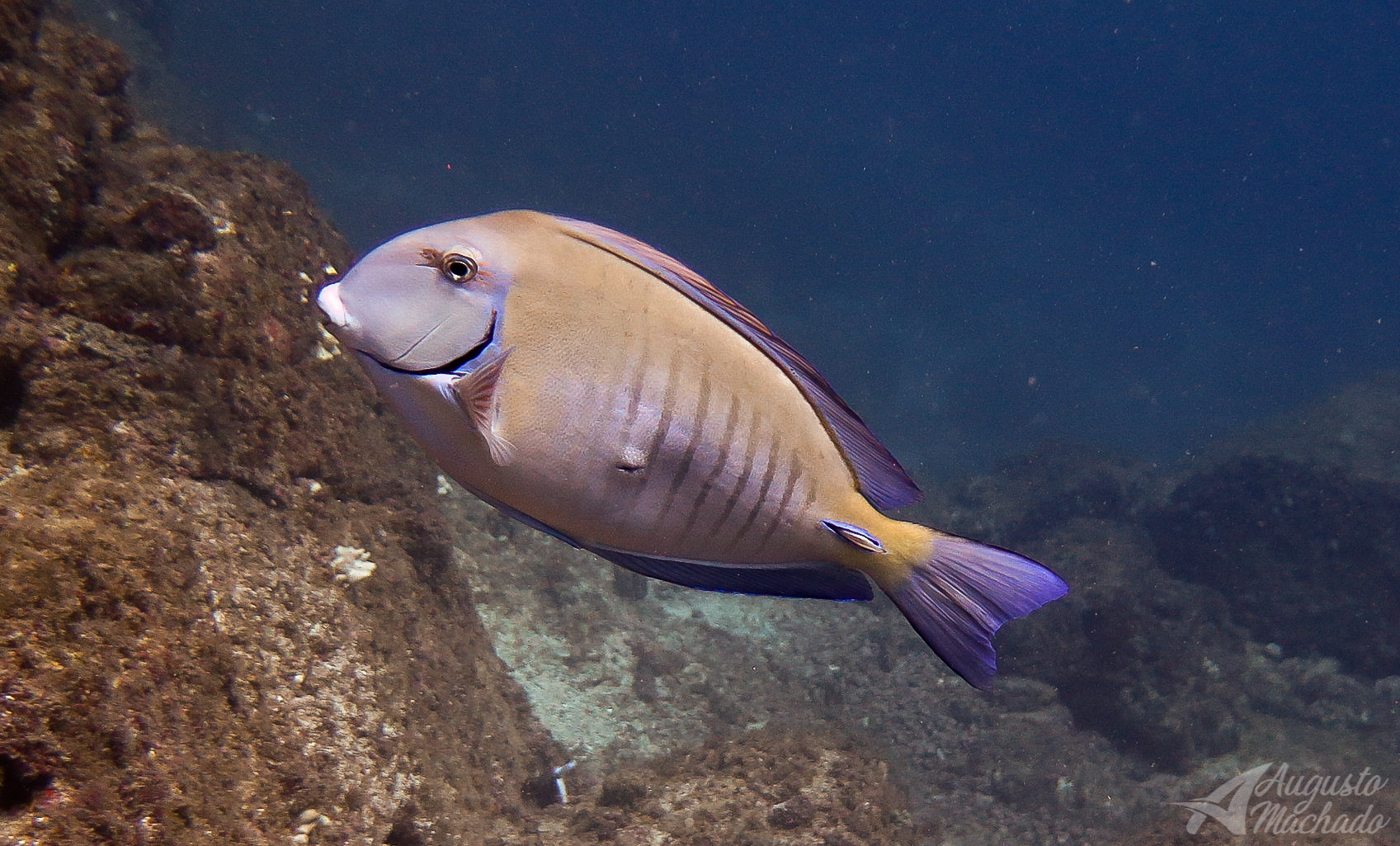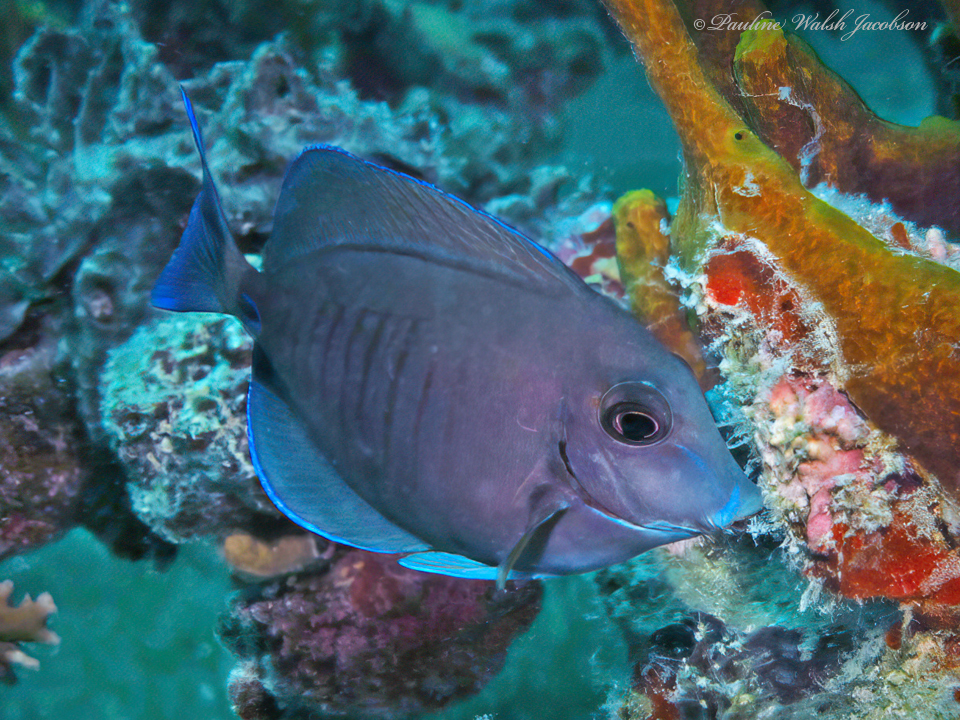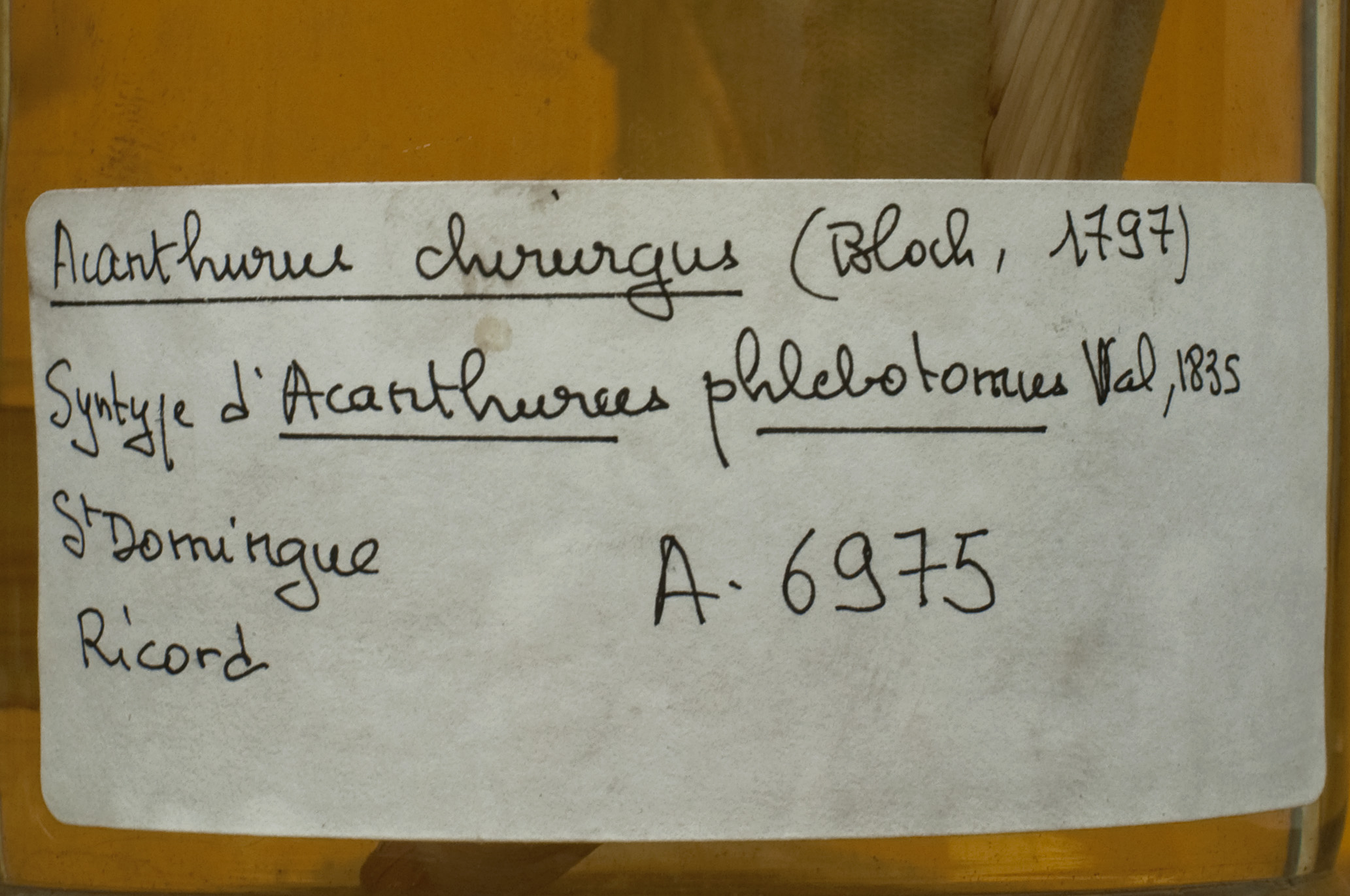Acanthurus chirurgus (Bloch, 1787)
Description
Dorsal spines (total): 9; Dorsal soft rays (total): 24 - 25; Anal spines: 3; Anal soft rays: 22 - 23. Caudal fin slightly emarginate (Ref. 13442). Body gray, with 10 well-spaced, narrow, darker gray vertical bars on side (Ref. 26938).
Common Names
Taxonomic Hierarchy
Kingdom: Animalia
Phylum: Chordata
Class: Teleostei
Order: Acanthuriformes
Family: Acanthuridae
Genus: Acanthurus
Species: Acanthurus chirurgus (Bloch, 1787)
Climate Zone
Location
Biology
Inhabits shallow reefs or rocky areas. Found in loose aggregations (Ref. 9710). Mainly diurnal. Ingests sand when feeding on algae (Ref. 13442). The spine on both sides of the caudal peduncle may inflict painful wounds (Ref. 5217). Minimum depth reported from Ref. 27115. Larvae are planktonic (Ref. 47377). At Fernando de Noronha Archipelago in southwestern Atlantic, juveniles hold cleaning stations together with the blue tang (Acanthurus coeruleus) and sergeant major (Abudefduf saxatilis) and graze algae as well as pick molted skin and parasites from green turtles (Chelonia mydas). This behavior is preceded by a characteristic inspection usually followed by feeding nips on the turtles’ skin (head, limbs, and tail), as well as on the carapace. The most inspected and cleaned body parts are the flippers (Ref. 51385).
Habitat
associated
Conservation Status
Least Concern
Threat to Humans
Traumatogenic

